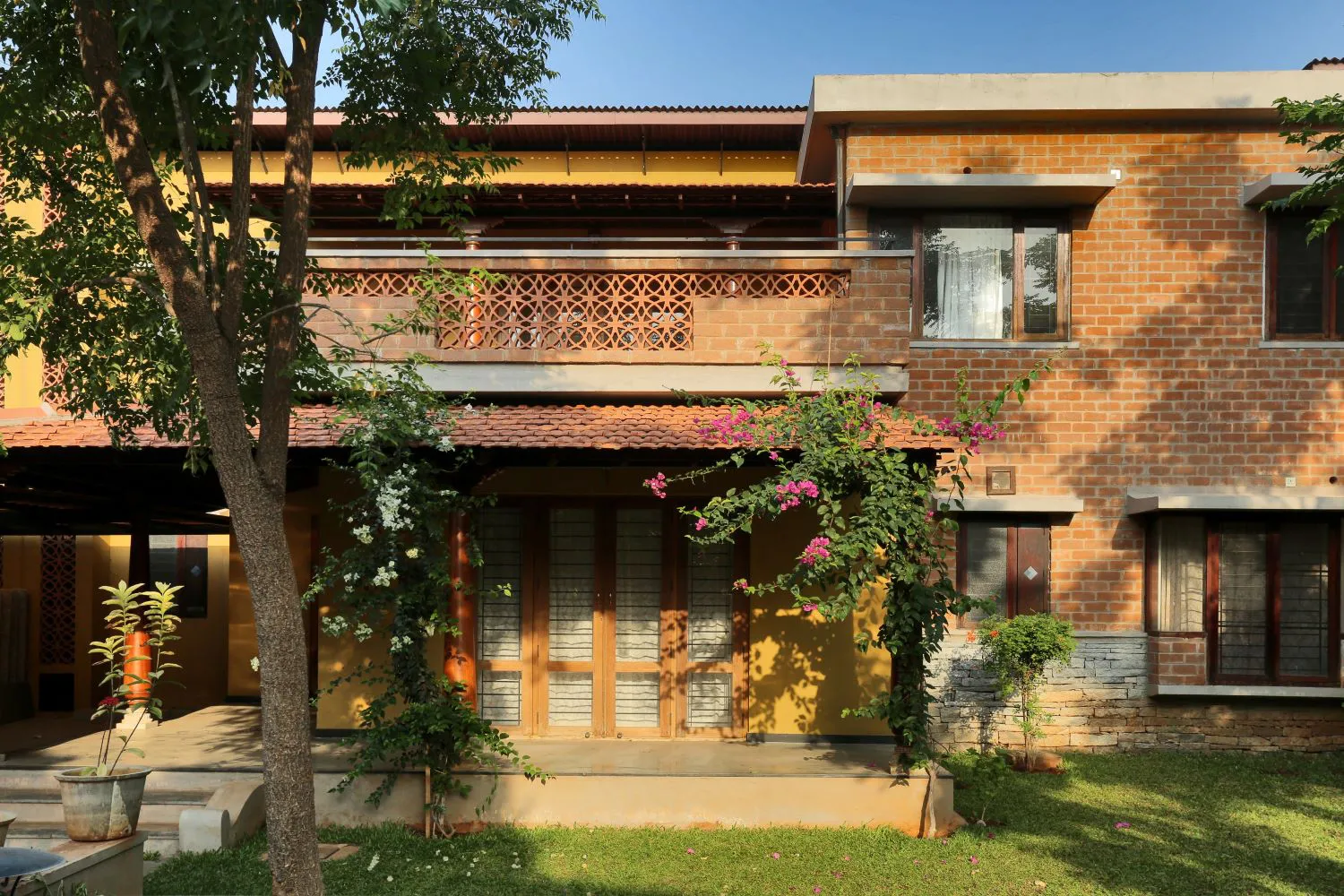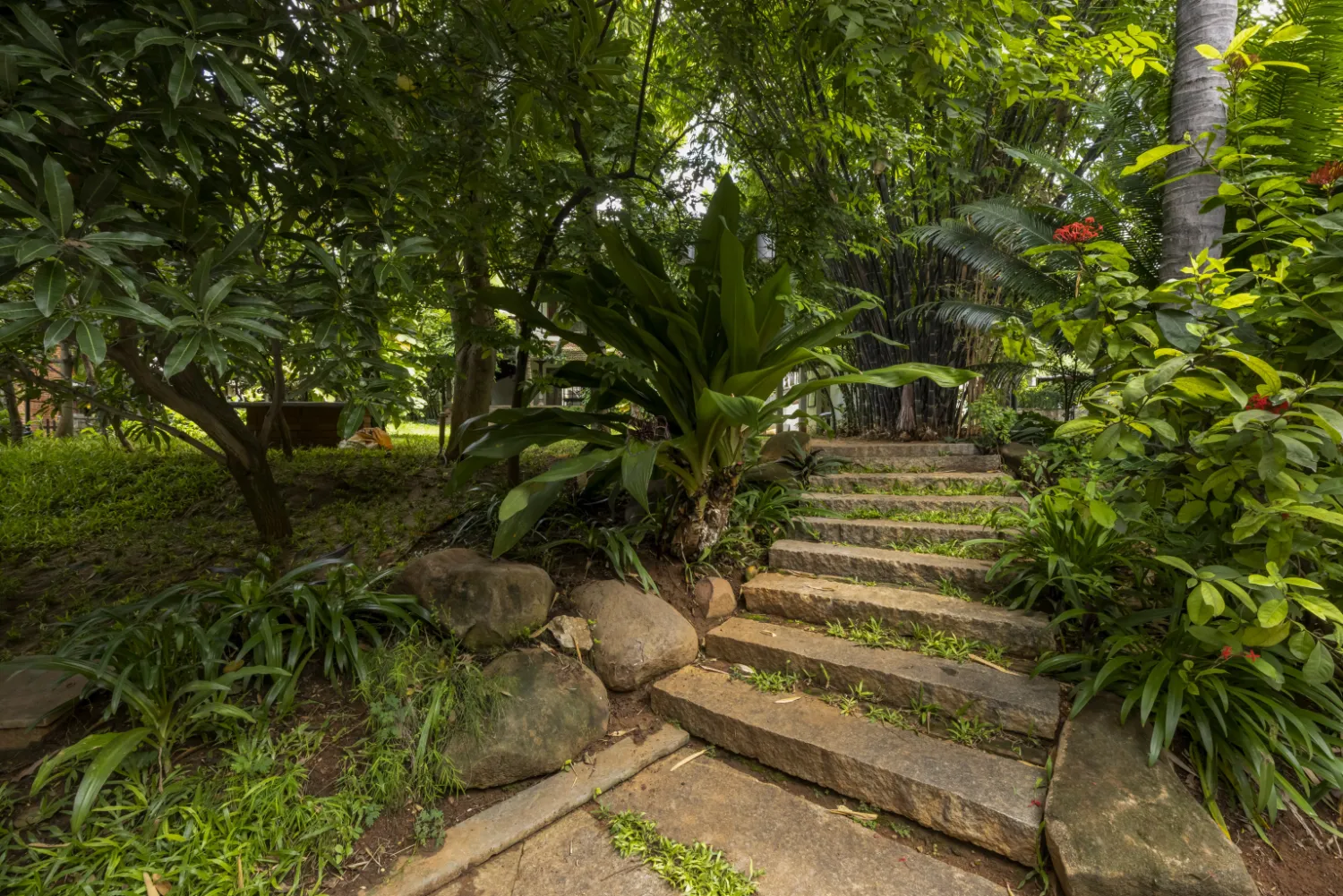Courtyards
Echoes of tradition in contemporary living

In the intricate puzzle of constructing a home, where every square footage is meticulously planned, one may wonder: where do courtyards fit in? Why do some homes embrace the concept of an open space within the confines of their homes?
Courtyards, by their very nature, are intimate open spaces. Essentially, a courtyard is a room without a roof, a sanctuary where the boundaries between indoors and outdoors blur. Here, the sky becomes your ceiling, and nature a constant companion.
However, courtyards offer a distinct form of privacy, setting them apart from other semi-open areas like verandahs or balconies. In contrast to these spaces that may be more exposed to the outside or neighbouring views, courtyards provide a secluded retreat inside or within the boundaries of one’s home. This unique characteristic highlights the ability of courtyards to create a private sanctuary that seamlessly integrates with the surrounding environment, fostering a sense of intimacy while maintaining a connection with the outdoors.
Courtyards in cultural context
As we trace the historical significance of courtyards, we discover their deep roots in vernacular architecture. Courtyards have been versatile spaces, playing multifaceted roles across diverse cultures, from communal hubs to functional spaces for cooking, sleeping, and gatherings. Their adaptability underscores their timeless significance in the architectural narrative.

As an integral part of traditional Indian home layouts, the internal courtyard, known as the “aangan” in Hindi, “vehra” in Punjabi, “thotti” in Kannada, “muttram” in Tamil or “nadumuttom” in Malayalam, provided ample natural light and ventilation to home interiors. It served as a space where numerous family activities could take place in complete privacy. Often flanked by corridors and verandahs, it played a crucial role in maintaining thermal comfort and natural ventilation, functioning as a convective thermostat that shielded the home from extreme temperatures.
Courtyards as contemporary sanctuaries

Amidst the bustling urban landscape, the renewed fascination with courtyards reflects a collective yearning for a reconnection with nature. Far more than mere design elements, courtyards play a pivotal role in sustainable living by infusing the core of the home with natural light and ventilation, mitigating the dependence on artificial sources. The temperate climate of Bangalore, fostering an environment conducive to semi-outdoor living, provides the ideal backdrop for courtyards to undergo transformations that go beyond the ordinary.
Courtyards, beyond their practical advantages, are captivating havens that go beyond the ordinary. These dynamic spaces have become integral to modern living, evolving to meet diverse needs while retaining their inherent aesthetic charm. Whether seamlessly extending from the kitchen for lively social gatherings with barbeque and grill or nestled as snug gardens for moments of solitude, courtyards transcend their conventional roles.
Picture a courtyard adorned with lush greenery, transforming into a serene outdoor workspace where the gentle rustle of leaves harmonises with the tapping of keys. Envision it as a secure play area for children, where the laughter of little ones dances in the breeze, an ideal compromise between outdoor freedom and parental supervision. Alternatively, see this courtyard metamorphosing into a haven of solitude, enveloped by verdant plants or centred around a tranquil water feature. It becomes a sanctuary for quiet reflection and meditative repose.

In each adaptation, the courtyard remains a climate-controlled oasis, seamlessly blending the traditional with the contemporary to satisfy the ever-evolving needs and desires of modern living. As courtyards continue to evolve, they stand as living testaments to the harmonious integration of nature and architecture, creating sanctuaries within homes where life unfolds with grace and tranquillity.
Another intriguing contemporary interpretation of traditional courtyards is the advent of covered courtyards. This modern manifestation takes the form of skylit spaces, thoughtfully designed with strategic air vents for efficient air movement. The success of covered courtyards lies in the size and positioning of the skylight, coupled with strategic placements of air vents to facilitate the escape of hot air. Without these design considerations, the space can become a heat trap. However, with careful attention to the size and placement of these skylights, covered courtyards play a pivotal role in ensuring the space remains well-ventilated without sacrificing the comfort of insulation. This thoughtful approach transforms covered courtyards into climate-controlled oases, a testament to the fusion of traditional concepts with contemporary practicality.
In embracing various adaptations, courtyards stand as living testaments to the harmonious integration of nature and architecture. These sanctuaries within homes offer spaces where life unfolds gracefully, bridging timeless tradition with the dynamic pulse of modern living.






Leave A Comment